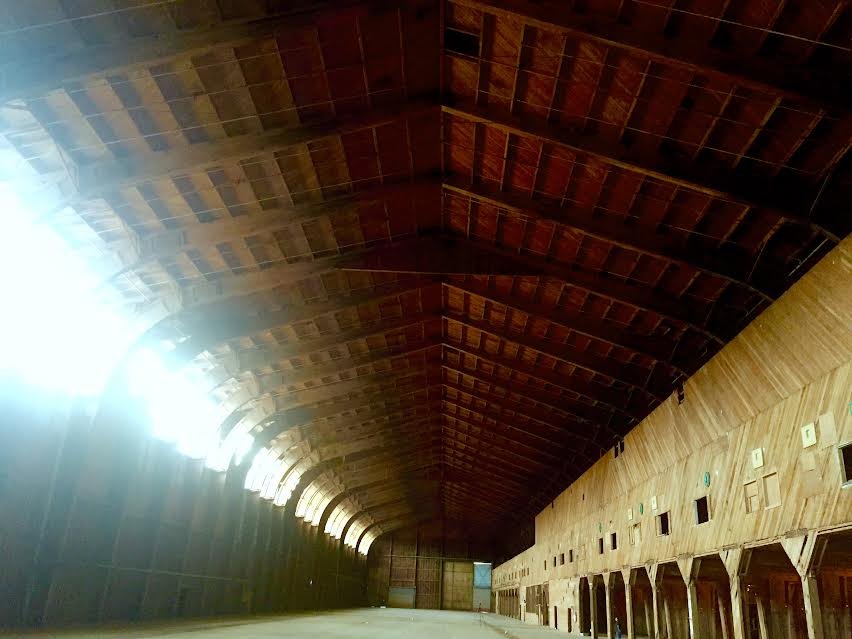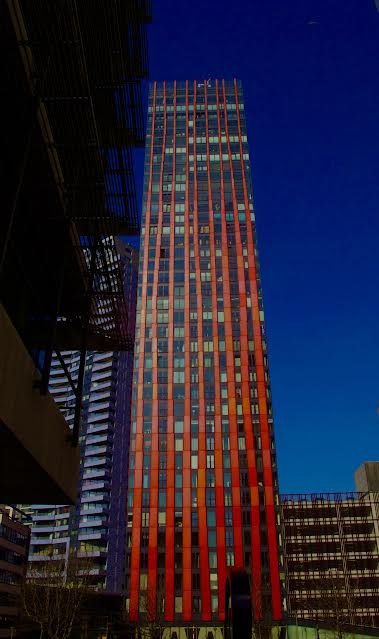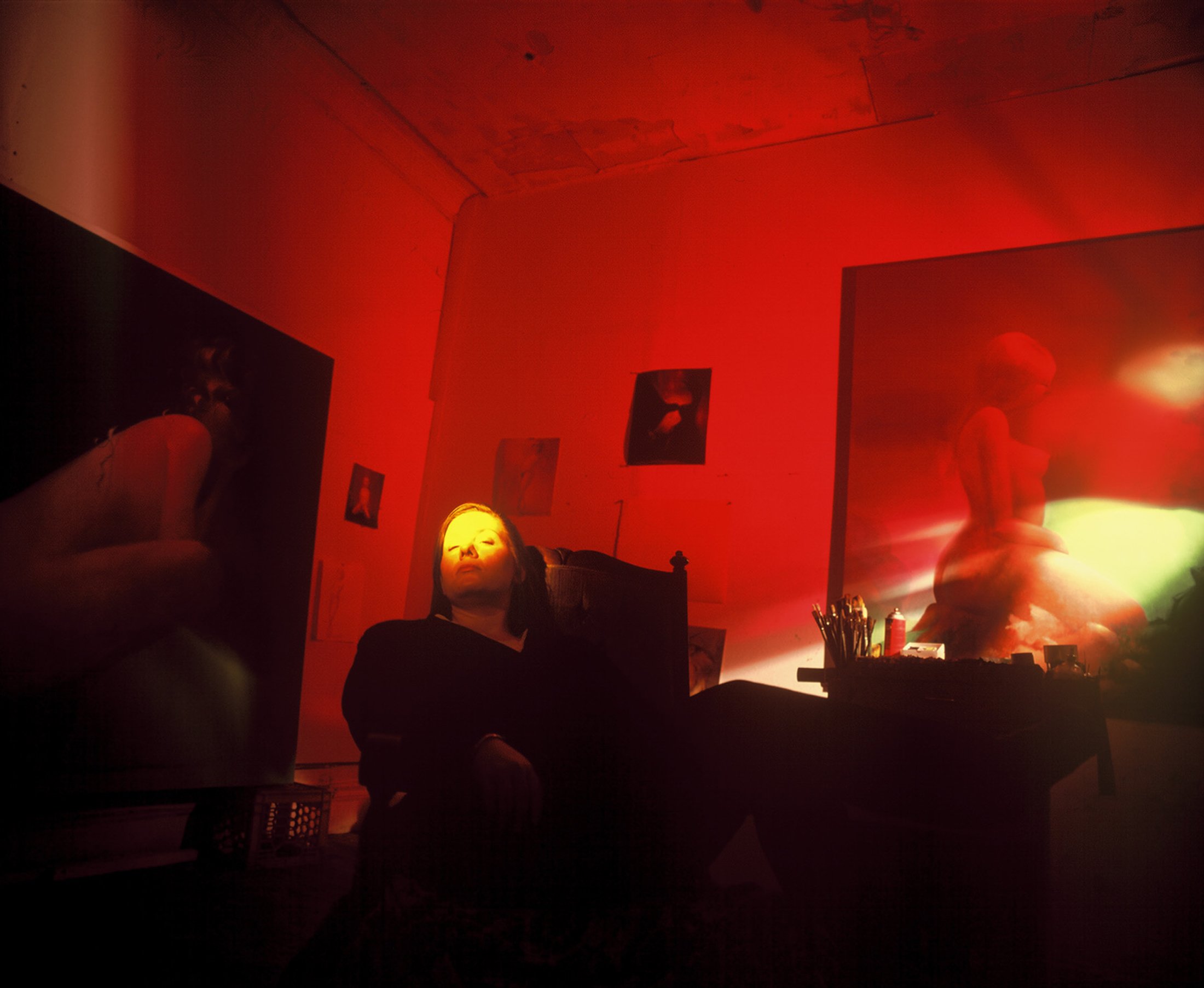Los Angeles Main Library
The Architecture of Cities: LA Art World And The Giacometti Face
When I landed in Los Angeles I felt the tectonic shift. It felt like the first one from four billion years ago, so they say.
Los Angeles Mulholland Drive is one of those curious roads: It begins here and ends there. If you are not familiar: think of a road atop a ridge of a mountain heading west emptying into the Pacific Ocean. Then imagine that same road heading east. In the opposite direction it will connect people in the low valley of San Fernando to parts known and unknown in Hollywood. You don’t have to understand Los Angeles to understand this scenario: You merely have to suspend your disbelief.
Valley kids from straightaway drags to curvy doomed turns versus West Side kids in poppas’ bought cars challenged each other. Engines revved with no intention of racing: Teenagers and a few twenty something thought the whole city was following their tracks. It is said that some girls bought into it. Throngs were waiting for the mythic Hollywood star Steve McQueen to arrive and contest the drag youngsters around Mullholland curves.
The kids down in the flats waited for a sign: some put their ear to the ground: others looked to the sky watching for a head to fly.
The Mulholland habitués Nicholson, Brando, Beatty and more sat around their terraced hillside home spreads listening for the racing action to begin. There might have been some smoke, a drink or something to pop down their throats to enhance the excitement.
Everyone’s mind was in sync: what was McQueen thinking? Did he really need to impress the locals? Was the need for adoration and fanfare what the superstar actor needed.
The LA mentioned above was one tenth of one infinitesimal part of Los Angeles. It sort of reminds me of secrets people tell about their past: it wasn’t my past, but one of those things you hear or see. The past is something that you have subconsciously forgotten or you are reminded of episodes as one might be reminded of the movie stars: They die and you recall the movies they were in and where you were in the year you watched on television or at the Pantages. Like a cartoon caption a little forgotten story pops up. The memory floodgates open up.
#ThomMayne #CaltransDistrict7 #Morphosis
I realize I have jumped from that little visual about LA on Mulholland to a greater canvas: I had been photographing hundreds of people in a stretch of time: The art world and the architecture world of an entire city. Everyone who was famous for being famous and other great personalities posed for my Pentax. From Pasadena to Malibu with Beverly Hills, Venice and Hollywood in between. It seems like a bit of folk lore now.
#DilleScofidio #BroadMuseum #LosAngeles
I met the art dealer everyone hated and 29 more. I met the museum directors: They were kings of a funny cliquish circle. I met the collectors who weren’t sure of the name of certain artists they collected.Yes, I photographed hundreds: Artists, Architects, Hollywood agents, Movie Directors, Real Estate tycoons and. But most importantly I saw the city that I left behind.There was not a single day of my visual life that I don’t stare into the abyss with my eyes praying for traces of history: I saw traces of my history and the history of an expanding metropolis.
#CesarPelli #DesignCenter
The entire story above was intended to be an exhibition that celebrated the culture of a city. The exhibition never happened. It is too complicated to explain the power play among the monied. But I became a better photographer: practice makes perfect.
I tried to understand my efforts. I tried to understand the power play. I tried to understand the hundreds of miles I traveled to make a bit of history.
#HowardHughes #SpruceGoose Where he brought the goose to
More #Cesar Pelli Design
I guess I could sum up my experiences this way: I photographed a very important art collector:
I made in my mind a beautiful portrait. As I do, I returned to the collector’s home to present my work. The collector said this was the most beautiful portrait. Then the collector asked me to follow into another room. The collector pointed to this drawing. The collector said there is one problem with this magnificent portrait you made: I look like this magnificent drawing made by Giacometti. The Giacometti art is great as is your photograph: But I wouldn’t want anyone to see me look like a Giacometti.
In a small way it didn’t matter. I loved my portrait moments. I loved rediscovering my Los Angeles and this new Los Angeles that saw itself as the new cultural frontier. That is not a commentary. It is what Hollywood agents and new and old money invented for themselves.
I loved every photography moment in Los Angeles. Everyone gossiped and styled for my shoots: Even the artists.
I went to lunches, I had drinks, I went to dinners:I was social.
Everyone was from a different planet.
Detail Los Angeles County Museum #LACMA








































































































